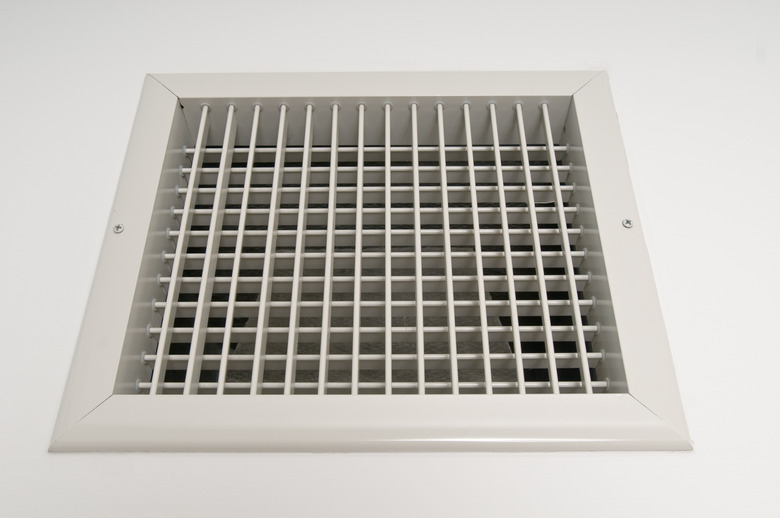Can You Change A Baseboard Vent To A Flat Vent?
Heat enters the home through a number of means, from radiators to vents. Some of these devices provide both aesthetic and practical value. As a homeowner, you face decisions when replacing vents, ranging from the material of the vent to its design and type. Baseboard and flat vents constitute heat registers.
Heat Registers
Heat Registers
The term "heat register" derives from the English term "organ register," a device used to control the tonal output of organ pipes. Heat registers control the output of heating systems to which they attach. These registers, which include baseboard or flat registers, fit over the opening at the end of a heating duct or flue. Simple controls on a register allow you to open and close tabs within the unit to control how much heat enters the room from the heating system.
Replacing Heat Registers
Replacing Heat Registers
Replacing a heat register requires removing the existing register and installing a new one. This relatively simple task requires little more than a screwdriver. In some cases, you may need a hammer to loosen registers stuck in place or pry flat pieces from the floor or wall. Ultimately, different types of registers provide aesthetic alternatives to one another – their shape in no way relates to the heating system, duct or flue involved. Thus, you can ostensibly replace any type of heating register with any other type of heating register.
Considerations
Considerations
When replacing a baseboard register with a flat register, certain considerations limit your options. Baseboard registers can fit over duct or flue openings on a wall or floor. When replacing a baseboard register with a flat register, the flat register must fit directly over opening. Therefore, if you want a flat register on the floor but your heating duct opens on the wall, you must forgo the floor register for a wall register or extensively modify your heating system. Furthermore, baseboard registers cover openings of numerous sizes. A flat register, on the other hand, must fit exactly into the opening. This might require ordering a custom register made specifically to the dimensions of your heating system.
Additional Information
Additional Information
Heat registers contain multiple parts. In order to replace a register, you must remove all existing parts of the old one. A baseboard register, for instance, is the triangular piece of wood or metal that sits against your wall and floor, holding a vent, which constitutes the top piece of the register. To replace a baseboard register you first remove the grated vent and then remove the register. Most registers come in wood or metal. Wood registers often exhibit florid designs. For aesthetic cohesion, order a register that fits the color and design of your home.
